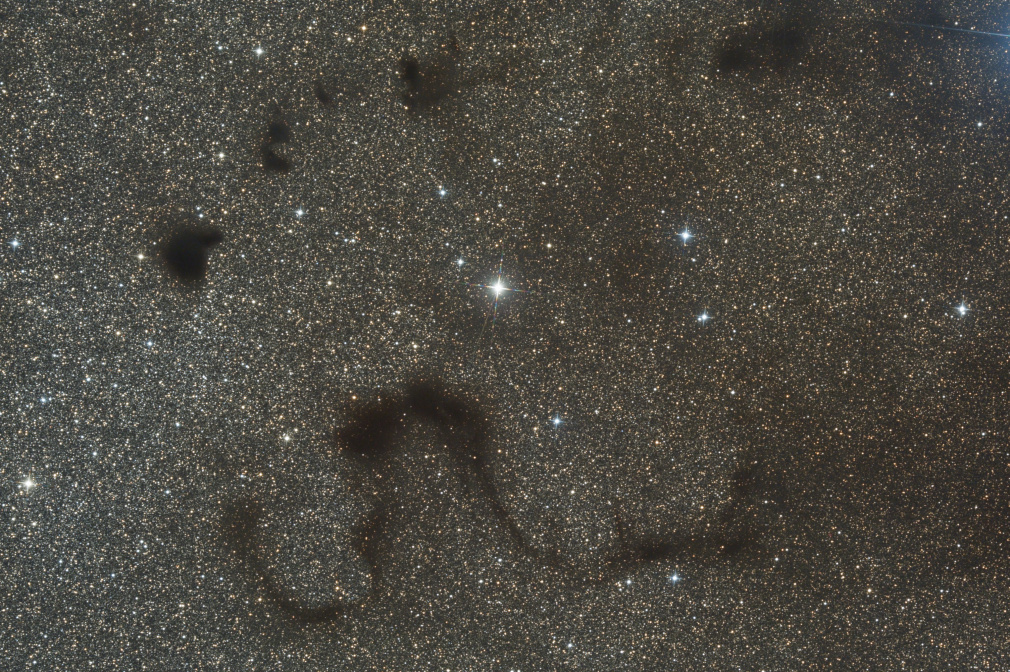What else could be a more appropriate location for the Snake Nebula than the constellation of Ophiucus (the Snake holder)?
Snake Nebula (Barnard 72) was first put into a catalogue by Edward Emerson Barnard in his work called Barnard Catalogue of Dark Markings in the Sky. The 1919 edition of his catalogue contained 189 dark nebulae which number has increased to 369 by 1927. Barnard's Star was also named after him, because he was the one who discovered and measured the proper motion of it.
The smaller patches of dark nebulae visible above the Snake Nebula in the picture were all catalogued separately by Barnard (from left to right: Barnard 68, 69, 71 and 70). Their distances are between 5-700 light years, while the Snake Nebula is at around 650 light years from the Solar System.
All of them are dark nebulae. Dark nebulae are also called absorption nebulae because they absorb the light coming from stars and other objects behind them, therefore they appear dark in front of a lighter background. They contain tiny dust particles smaller than a micron in size coated by the ice of surrounding gases (mostly carbon monoxide and nitrogen). This combination can absorb visible light very efficiently. These dark and cold nebulae also contain molecular hydrogen, atomic helium and several more complex molecules like ammonia and formaldehyde, but these are much more transparent than ice-covered dust particles.
Barnard 68, right above the Snake is quite dense and compact already, and it is contracting and getting even denser at a constantly increasing rate caused by its own gravitation, and very probably will collapse within 200000 years. The result will be a newly born star. The mass of Barnard 68 is about 2 solar masses and its current diameter is approximately 0.5 light years. This kind of dense, contracting dark nebulae are called Bok globules by the name of their discoverer Bart Bok.
